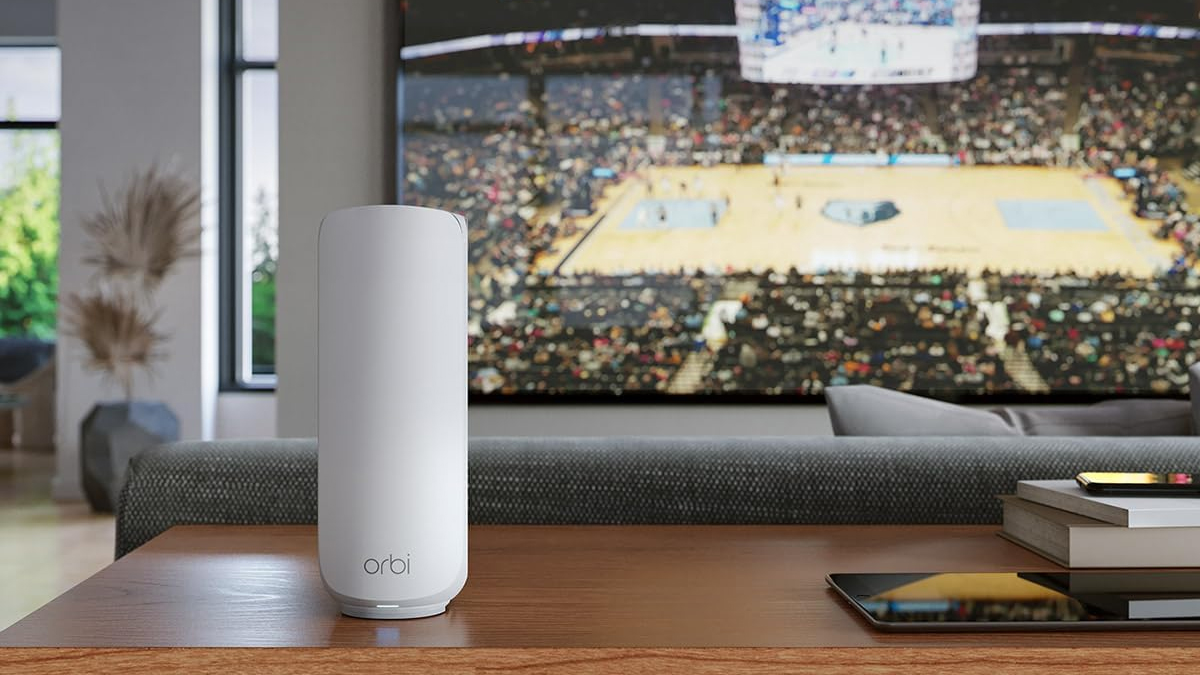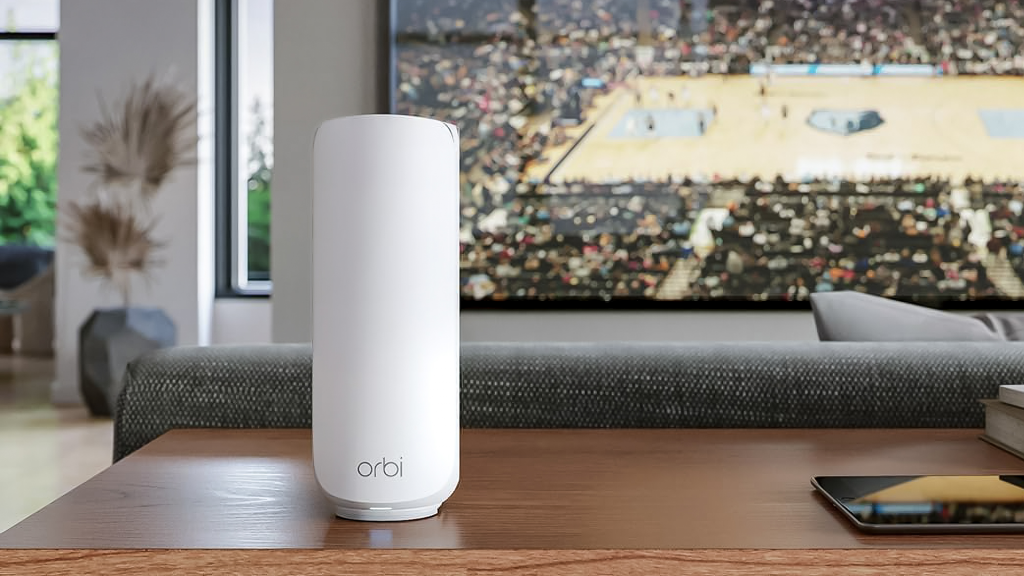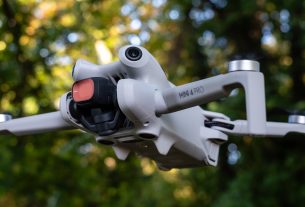
Netgear Orbi 373 Review: Join the Wi-Fi 7 Revolution
Wi-Fi 7 is here, and it’s changing the way we think about home connectivity. Faster, smarter, and more efficient, it’s the new gold standard for anyone who streams, games, or works from home. But if you’ve looked at the prices of flagship Wi-Fi 7 mesh systems, your jaw probably dropped before your download speeds improved. That’s where Netgear’s Orbi 370 Series steps in: a system built to bring next-gen connectivity to the masses without the four-figure shock.
Compact, capable, and refreshingly affordable, the Orbi 373 is the bridge between performance and practicality. It’s not trying to outmuscle the elite Orbi 970 series; instead, it aims to give the average household the seamless, high-speed network they deserve.
After weeks of testing, one thing is clear: this is one of the most balanced Wi-Fi 7 mesh systems on the market.
Design & Setup: Simplicity Meets Subtle Sophistication

The first thing you’ll notice about the Orbi 373 is its size: each unit is about as tall as a chunky hardback book, finished in clean white with gentle curves that help it blend quietly into your home décor. There’s no gamer-style lighting or sharp edges here; it’s minimalism done right.
The build feels solid yet unobtrusive, and that’s important: a mesh router isn’t meant to steal attention; it’s meant to disappear into your living space. The integrated LED light strip is small and neatly tucked along the bottom edge, though perhaps too discreet for those who like a clearer visual cue for network status.
Setup is exactly what you want from a modern mesh system: open the Netgear Orbi app, scan the QR code, and follow the on-screen steps. In less than ten minutes, the main hub and two satellites were up and running, automatically configured to create one unified network that extended across two floors without a hiccup.
It’s the definition of plug-and-play.
The app guides you through naming your network, setting a password, and placing your satellites. It’s intuitive, though not quite as slick or aesthetically polished as Amazon’s Eero or TP-Link’s Deco app. Still, it gets the job done efficiently.
Price & Availability: Affordable Wi-Fi 7 for Real Homes
You can buy the Netgear Orbi 373 3-pack now for around £300 in the UK or $350 in the US, and that’s where things get interesting.
Most Wi-Fi 7 mesh systems are easily double or triple that cost. While you do sacrifice some high-end luxuries (more on that later), the 373 still delivers 90 percent of the real-world experience at a fraction of the price.
In other words, this is Wi-Fi 7 for people who care about value, not bragging rights.
Performance: Reliable, Balanced, and Impressively Consistent

Netgear claims that a 3-pack Orbi 373 system can cover up to 4,500 square feet (418 square metres) and support up to 70 devices simultaneously, with theoretical speeds up to 3.6 Gbps.
While those numbers sound like marketing fluff, the real-world results were far from disappointing. In testing, the Orbi 373 easily blanketed a two-storey, three-bedroom house with strong, stable Wi-Fi coverage. Dead zones, those frustrating pockets of weak signal in corners or upstairs bedrooms, disappeared. Streaming 4K video, gaming online, and handling video calls across multiple rooms happened without a single stutter.
Even at the far end of the house, where other routers usually faltered, speeds stayed consistently high. For most homes, this kind of reliability is a game-changer.
Now, it’s worth noting: this is a dual-band system, not tri-band or quad-band like its pricier siblings. That means it operates on 2.4 GHz and 5 GHz, with no dedicated backhaul channel. If you’re pushing a lot of data between satellites or running dozens of high-bandwidth devices at once, you might notice a slight slowdown compared to the premium Orbi 970 or Eero Pro 7.
But for everyday use, streaming, remote work, smart-home devices, gaming, the Orbi 373 doesn’t break a sweat. It’s fast, consistent, and dependable, even with dozens of active connections.
Wi-Fi 7: Future-Ready Connectivity
The real appeal here is the future-proofing. With Wi-Fi 7 support, the Orbi 373 is ready for the next wave of connected devices: from 8K TVs to smart appliances, AR glasses, and beyond.
Wi-Fi 7 offers faster data throughput, reduced latency, and improved efficiency across congested networks. Even if your current devices don’t support it yet, upgrading to a Wi-Fi 7 system means you’re ready for the next several years of tech evolution.
You don’t need to be a network engineer to appreciate that. You’ll simply notice smoother streaming, lower lag, and fewer “Why isn’t the Wi-Fi working?” moments.
App Experience: Solid, If Slightly Dated
Netgear’s Orbi app remains a strong but slightly utilitarian tool. You can easily see connected devices, run speed tests, set up guest networks, and reboot your system with a tap.
However, it lacks the modern, polished feel of some competitors. The navigation is simple enough, but a few design updates and quality-of-life improvements wouldn’t hurt.
Where the app loses points is in its subscription-heavy ecosystem. Like most of Netgear’s products, advanced features sit behind paywalls.
Netgear Armor provides enhanced network security and malware protection for £34 a year. It’s powered by Bitdefender and includes a VPN and device scanning, which is genuinely useful — but it would be nice if at least some features were free.
Parental Controls are another add-on (£24 a year), offering content filters, screen-time management, and usage reports. You can try both for 30 days, but ongoing costs add up quickly if you want the full suite.
For some users, these subscriptions will feel like paying extra for features that should be included out of the box. On the flip side, they do make the Orbi 373 flexible: you can decide how much control and protection you want.
Day-to-Day Use: Forget It’s There, and That’s the Point
The best compliment a mesh system can receive is that you forget it exists, because it just works. That’s exactly the Orbi 373 experience.
Once set up, it quietly handles everything. You move from room to room, floor to floor, and your devices stay connected seamlessly. Streaming, downloading, cloud syncing, smart-home automation: all flow smoothly in the background.
During testing, there were no dropouts, no mysterious slowdowns, and no router reboots required. It handled gaming, Zoom calls, and 4K Netflix streams all at once without flinching.
It’s a “set it and forget it” system in the best sense of the phrase.
What’s Missing (But Forgivable)

Of course, this isn’t the top-of-the-line Orbi 970: and you’ll notice some corners cut to keep the price down.
First, it’s only dual-band, so there’s no separate channel for device-to-device or backhaul traffic. Heavy users transferring large files across devices might see minor slowdowns.
Second, each unit has only one spare Ethernet port. That’s fine for most households, but wired enthusiasts might crave more flexibility for NAS drives or gaming rigs.
Third, while the app is competent, it lacks the premium polish of some rivals. And the subscription model for features like Armor and parental controls can feel a bit like nickel-and-diming.
Yet, when you step back, none of these are deal-breakers. They’re sensible trade-offs, and most users won’t notice them at all.
For Whom the Orbi Works Best
The Netgear Orbi 373 hits a sweet spot that will appeal to a wide audience.
It’s perfect for families tired of buffering movies and dead zones upstairs. It’s ideal for remote workers who need stable video calls and cloud syncing throughout the house. And it’s great for tech-savvy homeowners who want to upgrade to Wi-Fi 7 without emptying their wallet.
If you live in a medium to large home (up to 4,500 square feet), this system is overqualified. If your space is smaller, you can even opt for a 2-pack and save some money.
It’s not a product for hardcore gamers or enterprise setups, but for 90 percent of users, it’s a perfect blend of speed, simplicity, and affordability.
Competitors: Where It Fits in the Market

Against its rivals, the Orbi 373 holds its ground well. The Amazon Eero Pro 7 offers tri-band connectivity and sleeker software, but costs nearly double. The TP-Link Deco BE63 brings similar Wi-Fi 7 power at a slightly lower cost but doesn’t match Netgear’s long-standing reliability.
Netgear’s own Orbi 970 remains the flagship, but its near-£1,500 price tag makes it hard to justify unless you’re managing a massive smart-home ecosystem.
The 373, by contrast, feels approachable: premium performance without the premium price.
Verdict: Smart, Stable, and Surprisingly Affordable
The Netgear Orbi 373 Series is proof that Wi-Fi 7 doesn’t have to come wrapped in luxury pricing. It’s a well-engineered, thoughtfully designed mesh system that delivers reliable coverage, strong speeds, and future-ready connectivity without intimidating setup or cost.
Yes, it’s dual-band. Yes, there are subscriptions. But for what you’re paying, the Orbi 373 punches far above its weight. It’s fast, dependable, easy to live with, and built to handle the connected home of today and tomorrow.
If you want to upgrade to Wi-Fi 7 without overspending, this is the one to beat.
Final Verdict: The Orbi 373 nails the essentials: stable connection, smart setup, sleek design, and real value. It’s the kind of product that makes your Wi-Fi feel invisible in the best possible way: always there, always fast, and never in your way.







